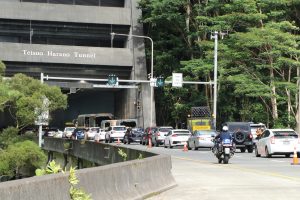From the governor: Hawai‘i’s Pandemic Action Plan
Posted on Sep 29, 2020 in Capitol Connection, Featured, MainA new COVID-19 leadership team for better response and community input. New programs to help people pay their rent and survive unemployment. More effective ways to monitor the virus — including a new COVID-19 dashboard, better contact tracing, and record-setting “surge testing.” And now, the Oct. 15 launch of a pre-travel testing program to keep the community safe and help local businesses recover. This edition talks about the three priorities of the Hawai‘i Pandemic Action Plan: protecting public health, reviving the economy and strengthening our community as we fight this virus together.
Q. Looking ahead, are there hopeful signs for the state?
A. Yes, there are many positive signs. When you look at the trends, the COVID-19 case numbers are coming down. From our surge testing of more than 60,000 people — the best response in the nation — the good news is the virus isn’t so widespread. Our new, realigned leadership team is committed to providing a better, faster response to this pandemic and implementing a plan that addresses public health, economic and community concerns, including more help for the unemployed and businesses, and the Oct. 15 start of the pre-travel testing program for residents and visitors.
Q. What gives you confidence in your new COVID-19 leadership team?
A. They’re taking the lessons learned from the past few months and building on them. Dr. Libby Char, the new Department of Health director, is a seasoned emergency room physician used to dealing with crises. She’s a strong, calm leader who understands the need to prioritize. HI-EMA Director Ken Hara will make sure we’re harnessing enough resources at the federal, state and county levels. Lt. Gov. Green will be focusing on new, better methods for testing and a future vaccination plan. And former Health director, Dr. Ginny Pressler, will lead the new Laulima Alliance to give public and private sectors a voice in decision-making.

Surge testing on the H-3 and other spots drew more than 60,000 people — the best response in the nation.
Q. Are we always going to be faced with a cycle of relaxing and tightening restrictions? Is this the “new normal”?
A. Yes, until we have a vaccine, we have to respond to virus activity in the community. That’s the challenge and the dilemma. We want to revive the economy, get people back to work and support businesses, but if some people aren’t taking precautions, then we get increased cases, which overwhelm the medical system and we have to shut down. It’s all connected. It’s natural that people want to return to life as it was, but this is the “new normal.” Some may think the state can just control the virus, but government can only do so much. It’s up to each of us to realize we have the power to control the spread. If we do, we can find the balance between protecting public health and loosening restrictions. Otherwise, if we get a spike in cases, we have to impose restrictions again.
Q. What should we know about the Oct. 15 launch of the Safe Travels pre-testing program?
A. The COVID-19 pre-testing program is part of the multi-layered screening process for all incoming travelers — residents and visitors —arriving in Hawai‘i. Starting Oct. 15, incoming travelers are subject to the 14-day quarantine unless they can produce evidence of a negative FDA-authorized NAAT test result from a certified lab, administered within 72 hours from the final leg of departure. We’re working with partners like CVS and Kaiser Permanente (members only) who have committed to meeting the parameters, with other partners to be announced. We’re also working with the visitor industry to provide a good experience for travelers while keeping the community safe.
Q. What have been the challenges in developing a plan for reopening schools?
A. It’s not a one-size-fits-all situation. A key metric is the number of positive COVID-19 cases per 10,000 population over a 14-day period by island as well as how well each school complex is able to mitigate the spread of the virus. This guidance from the Department of Health can help school leaders choose between online only, blended or face-to-face learning.
Read more in the October Capitol Connection newsletter
Subscribe to the Capitol Connection newsletter
